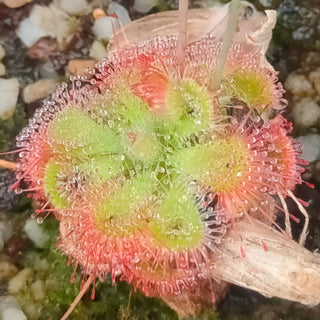Stokesia laevis
STOKE'S ASTER
- Unit price
- / per
This perennial aster is native to the Southern parts of North America. Long-lived perennial that is great for cut-flower arrangements with blossoms up to 2" across. Generally prefers drier conditions, though can survive periods of being wet if in sandy soil. Generally does better in full sun, though can do well in part shade conditions as well. Blooms from July to October.
Type: Perennial
Hardiness zone: 6-9
Height: 36", 90cm
Location: Sun or part shade
Seeds per packet: 5
Sow just under the surface of the soil and water in. Temperature 20-22 °C (68-72 °F) for 4 weeks. They may be growing at this point. If they have not germinated after 4 weeks then a cooling period is required. Cover them with plastic and place in a fridge for 4 weeks. Be sure they stay moist. After the stratification period they are then brought back to room temperature for them to germinate. Germination can be 30-60 days after the warming period, though some can take longer.
Stokesia laevis
STOKE'S ASTER
- Unit price
- / per
Multiple secure payment options available.
Adding product to your cart
You may also like
This perennial aster is native to the Southern parts of North America. Long-lived perennial that is great for cut-flower arrangements with blossoms up to 2" across. Generally prefers drier conditions, though can survive periods of being wet if in sandy soil. Generally does better in full sun, though can do well in part shade conditions as well. Blooms from July to October.
Type: Perennial
Hardiness zone: 6-9
Height: 36", 90cm
Location: Sun or part shade
Seeds per packet: 5
Sow just under the surface of the soil and water in. Temperature 20-22 °C (68-72 °F) for 4 weeks. They may be growing at this point. If they have not germinated after 4 weeks then a cooling period is required. Cover them with plastic and place in a fridge for 4 weeks. Be sure they stay moist. After the stratification period they are then brought back to room temperature for them to germinate. Germination can be 30-60 days after the warming period, though some can take longer.

















































